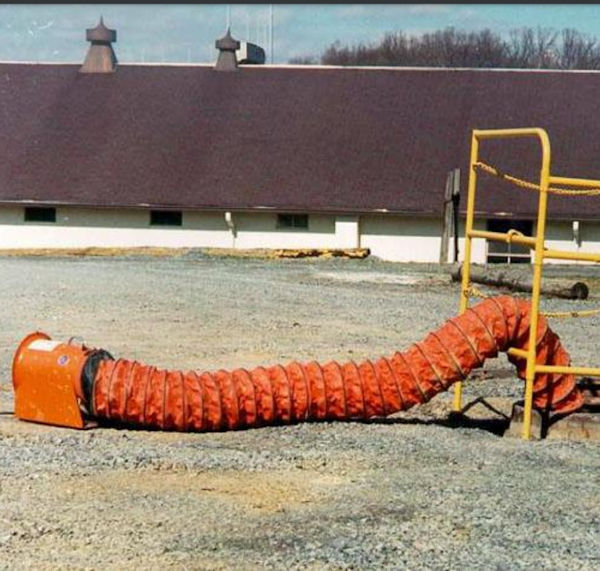Hazardous Atmospheres
Hazardous atmospheres are one of the most common and potentially deadly hazards associated with confined spaces.
A hazardous atmosphere is any atmosphere that may incapacitate, injure, or impair an employee's self-rescue or lead to acute illness or death to workers and rescuers who enter confined spaces.
The following are examples of hazardous atmospheres within a confined space:
- Flammable or explosive gas, vapor, or mist in a concentration greater than 10 percent of its lower flammable limit (LFL) or lower explosive limit (LEL).
- Combustible dust suspended in air, which obscures vision at a distance of five feet or less.
- Atmospheric oxygen concentration levels below 19.5 percent or above 23.5 percent at sea level.
- Atmospheric concentration of any substance with an acutely toxic effect above its PEL, and any other atmospheric condition that is immediately dangerous to life or health (IDLH).
Read about two confined space fatal accidents due to a hazardous atmosphere.
Two employees entered a manhole section of a sanitation sewer line. Both employees lost consciousness in the manhole section. The EHS service that attempted to conduct the rescue of the employees noted that the oxygen levels were at 12.1%. The employer did not have a means of testing the atmosphere in the manhole section, and the employees were not trained on OSHA requirements for working around and entry into confined spaces. Both employees died of asphyxiation.
Two employees were emptying and cleaning an open topped frack tank at an oil and gas services site. The employees were working at remote site by themselves. At the time of the investigation, hyrdrogen sulfide (H2S) gas was detected at levels between 3 parts per million (ppm) and 5 ppm, which is non-lethal. The two employees died. But, it is not possible to estimate what the H2S levels might have been when the employees were killed. The tank contained approximately 2 feet of water/oil.
Acceptable Atmospheric Conditions
For guidance, refer to sources of information that comply with published scientific and industry information, such as a Safety Data Sheet (SDS), and National Consensus Standards from organizations such as the American Conference of Governmental Industrial Hygienists (ACGIH) and the National Institute for Occupational Safety and Health (NIOSH).
Knowledge Check Choose the best answer for the question.
4-2. Which of the following is an example of a hazardous atmosphere in a confined space?
You forgot to answer the question!

